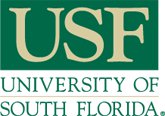Below is a summary of the abstract you submitted. Presenting author(s) is shown in bold.
If any changes need to be made, you can modify the abstract or change the authors.
You can also download a .docx version of this abstract.
If there are any problems, please email Dan at dar78@pitt.edu and he'll take care of them!
This abstract was last modified on March 15, 2021 at 3:09 p.m..

Phages are the most abundant organism on Earth and are biologically relevant since they have been used as agents to fight infections to antibiotic-resistant bacterial strains. The SEA PHAGES consortium categorizes phage into clusters based on nucleotide identity and those with low identity to others in the database are termed singletons. Singletons represent unique phage genomes, although the phage may have regions of identity and genes found in phages that have been annotated. VanLee is a siphoviridae phage that was isolated on Gordonia rupripertincta NRRL B-16540 using an enrichment strategy. VanLee shows an EOP of 1.0 when plated on Gordonia terrae 3612, suggesting that this phage can infect multiple hosts, although it did not infect Microbacterium foliorum. The VanLee genome is 84,560bp, is 67.8% GC-rich and contains ~166 protein coding genes and 1 tRNA. The goal of the project was to annotate VanLee and evaluate several regions that contained a high number of Oprham genes. VanLee shows a similar genome organization to other actinobacteriophages on its 5’ end with a high number of structural genes upstream of the putative tape measure gene (gp18), followed by several minor tail genes and the lysin/holin genes. During isolation, the life cycle was difficult to determine because the phage growth is slow and generates very small plaques. However, an immunity cassette was identified between genes 32-40 that includes a tyrosine integrase, metalloprotease, Cro protein, immunity repressor and excise. Interestingly an additional immunity repressor with very strong HHpred hits was also identified at gp109. Although VanLee is a singleton, 35 of the first 46 genes (76%) could be assigned function. After gene 46, greater than 60% of the remaining 120 genes were classified as orphams and only 13 could be assigned function. However, toxin/antitoxin, HicA-like (gp125) and HicB-like (gp103) genes were identified in this region. VanLee has regions of genome identity with DE Gordonia phages Aleemily and Cafasso. Alignment of these genomes using Phamerator indicated a 7,000bp region toward the 3’ end of the genome that contained approximately 21 genes and showed numerous small regions of repeated nucleotide sequence. Detailed analysis of the VanLee genome indicated that these regions were upstream of putative ATG start codons and were located within the 80-100bp gaps to the previous genes. The repeated regions were identified upstream of 11 genes and each was approximately 75bp long and contained 3-4 subregions of 7-12bp with near 100% conservation. The 11 genes downstream of these sequences showed no conservation between VanLee and the other phages and none of the genes had function that could be predicated by strong HHpred hits. These regions may be involved in regulation of gene expression and are worthy of future research. Thus, VanLee represents a phage of high interest due to its possible host range, toxin/antitoxin genes and high number of orpham genes.
